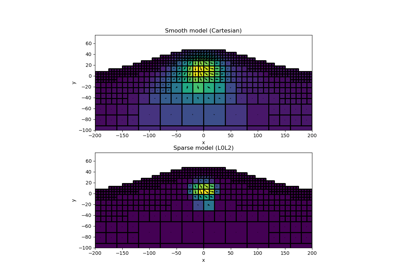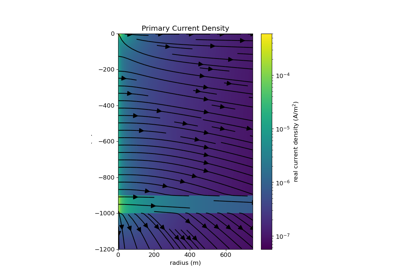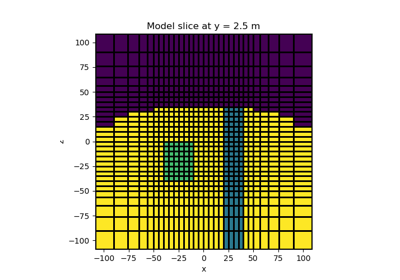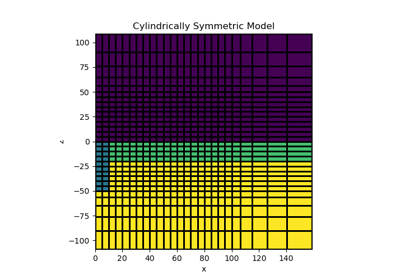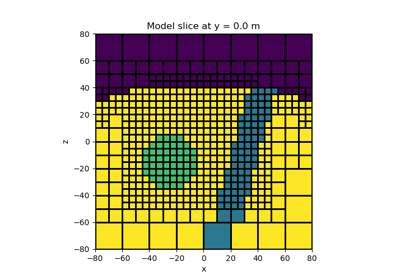simpeg.maps.Projection#
- class simpeg.maps.Projection(nP, index, **kwargs)[source]#
Bases:
IdentityMapProjection mapping.
Projectionmapping can be used to project and/or rearange model parameters. For a set of model parameter \(\mathbf{m}\), the mapping \(\mathbf{u}(\mathbf{m})\) can be defined by a linear projection matrix \(\mathbf{P}\) acting on the model, i.e.:\[\mathbf{u}(\mathbf{m}) = \mathbf{Pm}\]The number of model parameters the mapping acts on is defined by nP. Projection and/or rearrangement of the parameters is defined by index. Thus the dimensions of the mapping is (nInd, nP).
- Parameters:
- nP
int Number of model parameters the mapping acts on
- index
numpy.ndarrayofint Indexes defining the projection from the model space
- nP
Attributes
Determine whether or not this mapping is a linear operation.
The mesh used for the mapping
Number of parameters the mapping acts on.
Dimensions of the mapping.
Methods
deriv(m[, v])Derivative of the mapping with respect to the input parameters.
dot(map1)Multiply two mappings to create a
simpeg.maps.ComboMap.inverse(D)The transform inverse is not implemented.
test([m, num, random_seed])Derivative test for the mapping.
Examples
Here we define a mapping that rearranges and projects 2 model parameters to a vector space spanning 4 parameters.
>>> from simpeg.maps import Projection >>> import numpy as np
>>> nP = 2 >>> index = np.array([1, 0, 1, 0], dtype=int) >>> mapping = Projection(nP, index)
>>> m = np.array([6, 8]) >>> mapping * m array([8, 6, 8, 6])
Galleries and Tutorials using simpeg.maps.Projection#
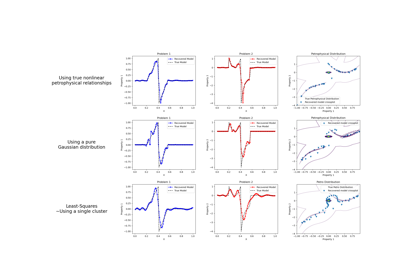
Petrophysically guided inversion: Joint linear example with nonlinear relationships
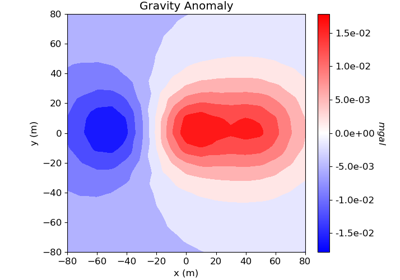
Cross-gradient Joint Inversion of Gravity and Magnetic Anomaly Data
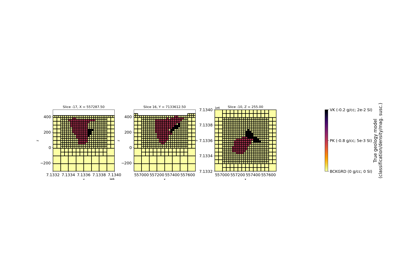
Joint PGI of Gravity + Magnetic on an Octree mesh using full petrophysical information
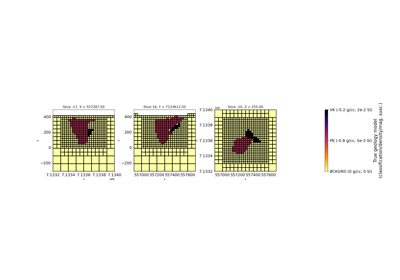
Joint PGI of Gravity + Magnetic on an Octree mesh without petrophysical information

